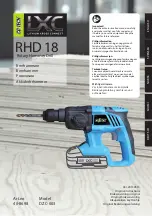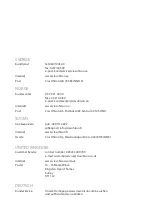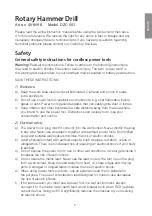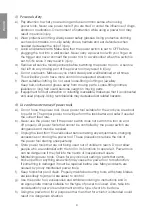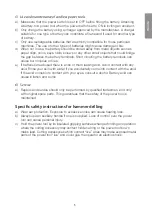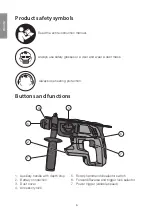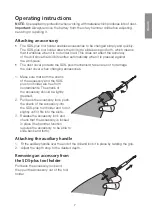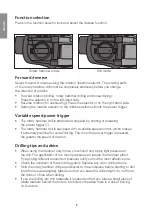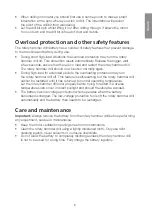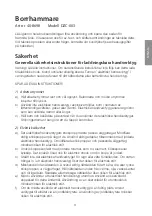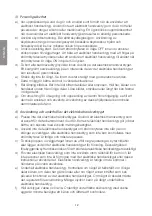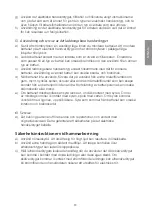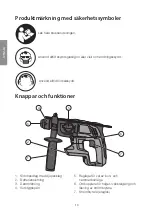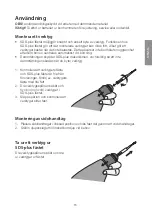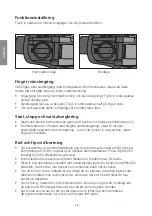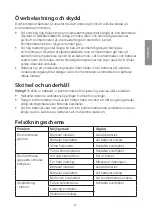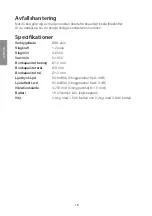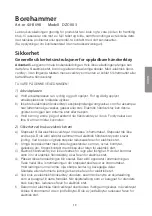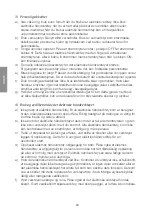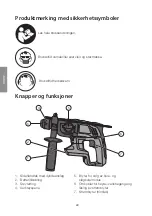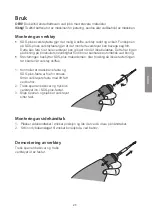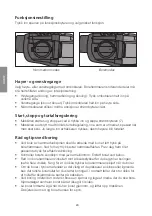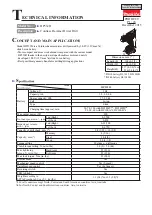
9
EN
G
LI
SH
• When drilling into metal you should first use a centre punch to make a small
indentation at the spot where you wish to drill. The indentation will prevent
the point of the drill bit from wandering.
• Let the drill bit spin whilst lifting it out after drilling through, it allows the motor
to cool down and the drill bit is freed of dust and debris.
Overload protection and other safety features
The rotary hammer drill/battery has a number of safety features that prevent damage
to the machine and battery during use.
• During short high-load situations the overload protection may turn the rotary
hammer drill off. This protection resets automatically. Release the trigger, wait
a few seconds, ensure that there is no load and restart the rotary hammer drill.
The rotary hammer drill should now function normally again.
• During high-load for extended periods the overheating protection may turn
the rotary hammer drill off. This feature is self-resetting but the rotary hammer drill
cannot be restarted until it has returned to normal operating temperature.
Let the rotary hammer drill cool properly before trying to restart it. Adverse
temperatures can occur in direct sunlight and should therefore be avoided.
• The battery has low-voltage protection which operates when the battery
becomes discharged. The low-voltage protection turns off the rotary hammer drill
automatically and the battery then needs to be recharged.
Care and maintenance
Important:
Always remove the battery from the rotary hammer drill before performing
any adjustment, service or maintenance.
• Keep the motor ventilation openings free from contaminants.
• Clean the rotary hammer drill using a lightly moistened cloth. Only use mild
cleaning agents, never solvents or corrosive chemicals.
• Do not allow the battery to completely discharge unless the rotary hammer drill
is not to be used for a long time. Fully charge the battery regularly.
Summary of Contents for RHD 18
Page 44: ......

